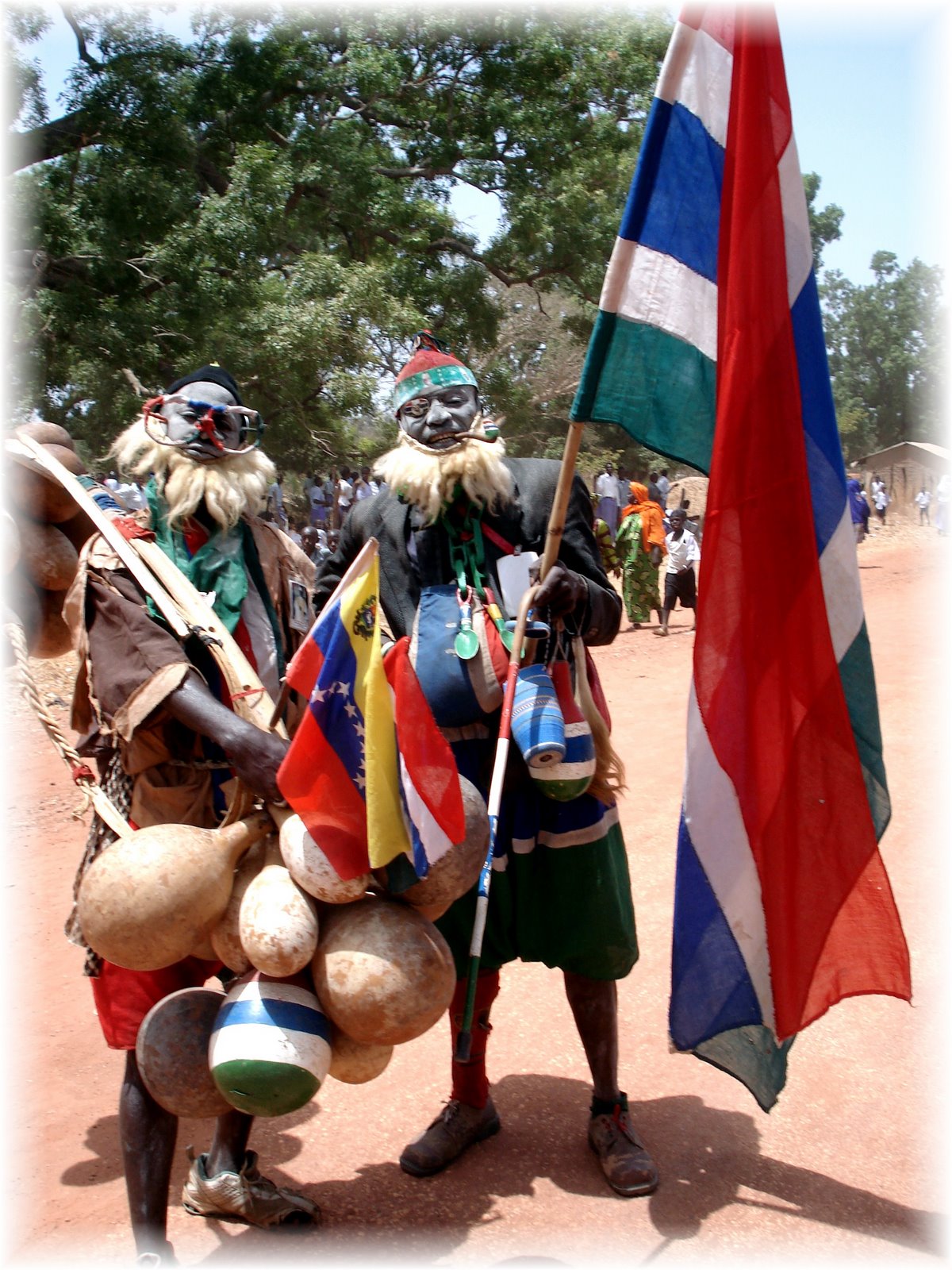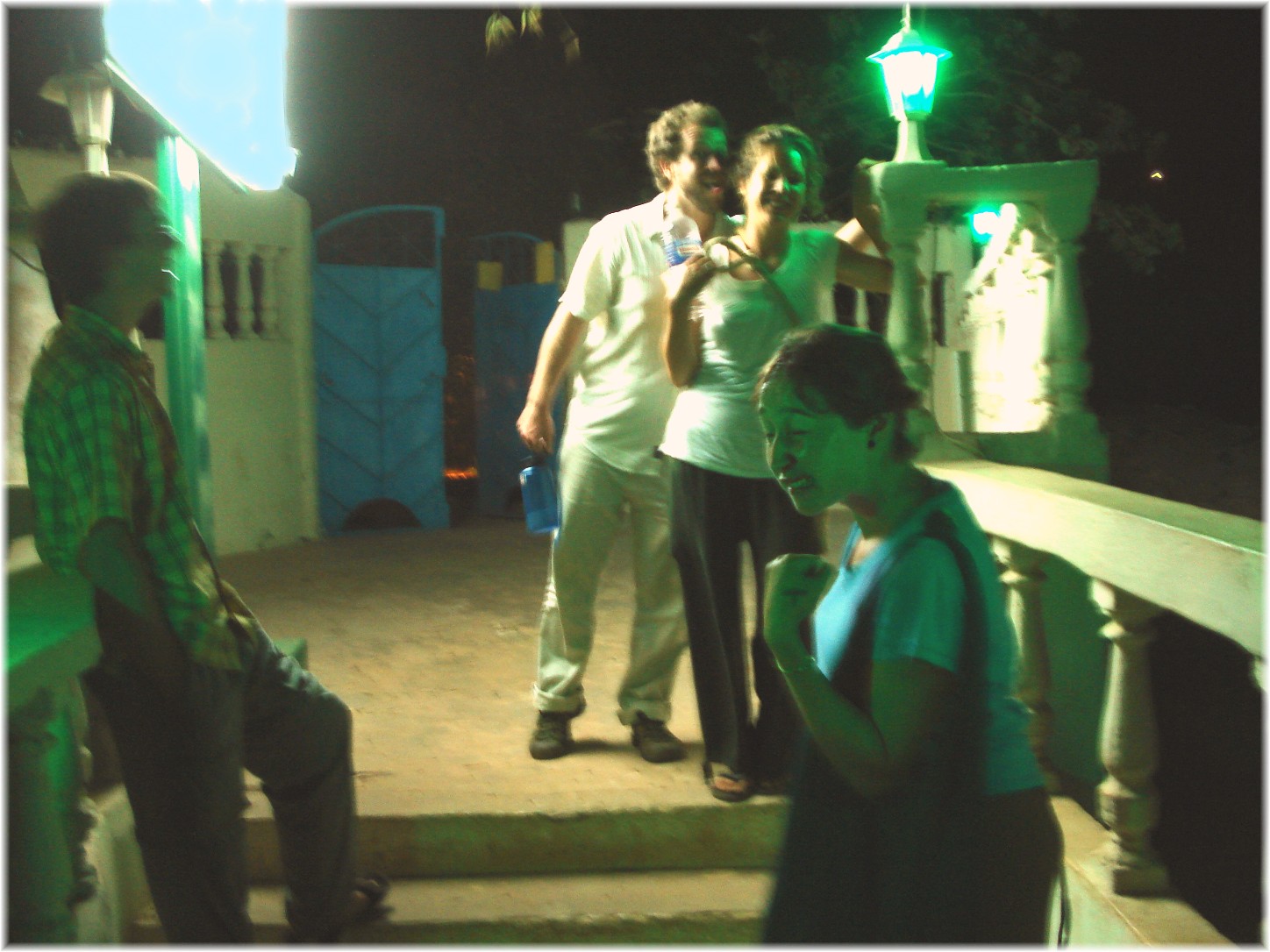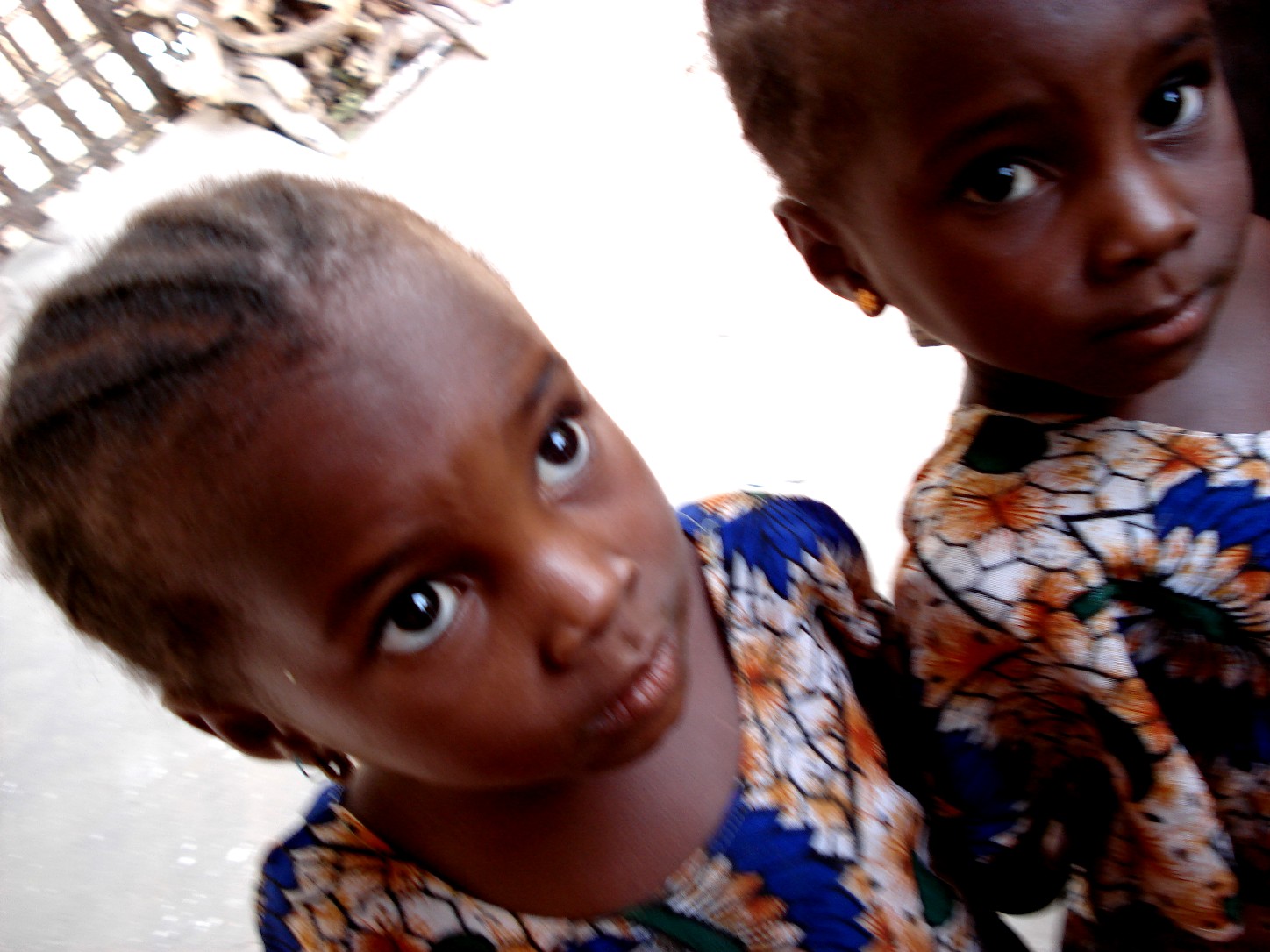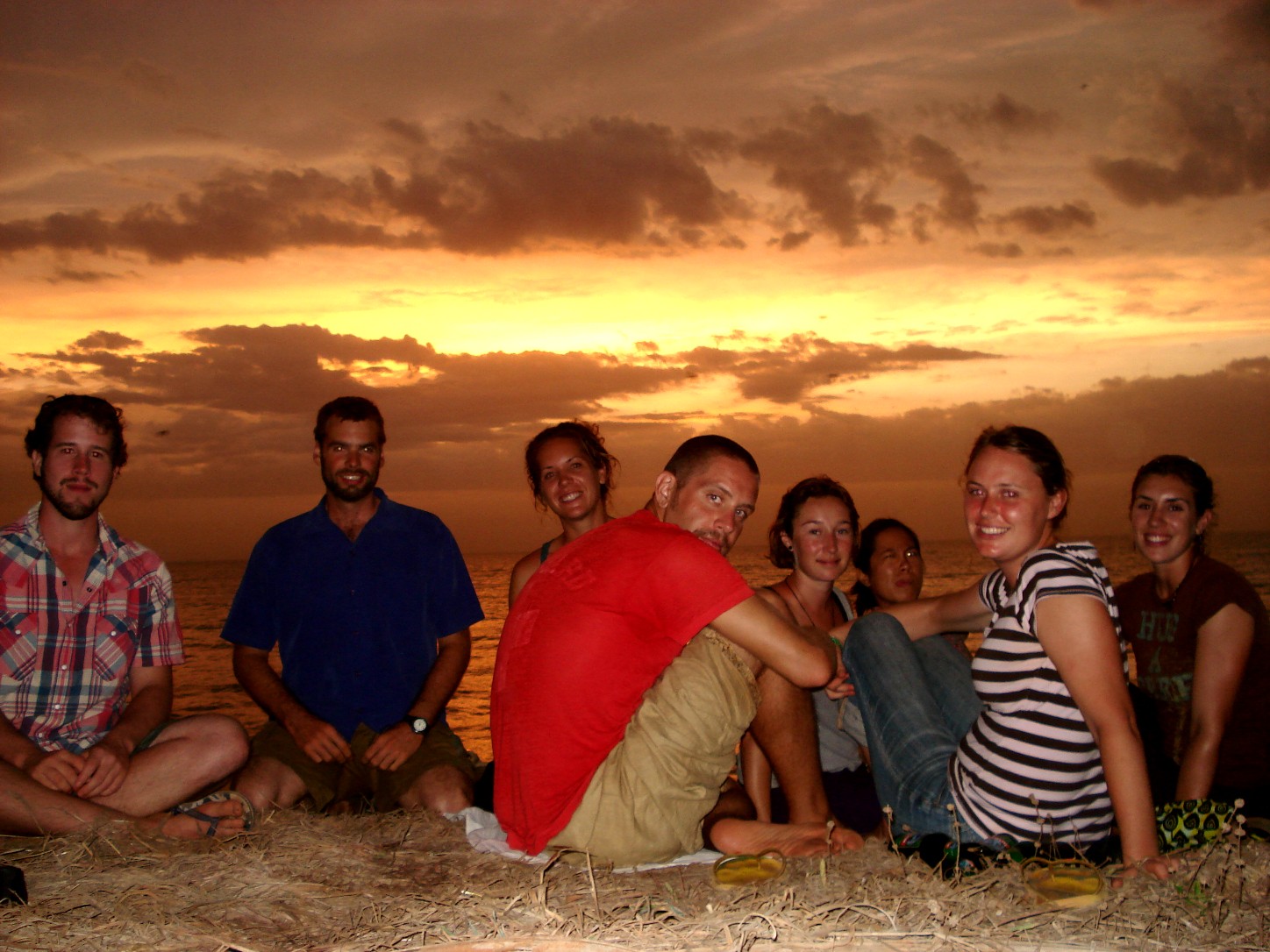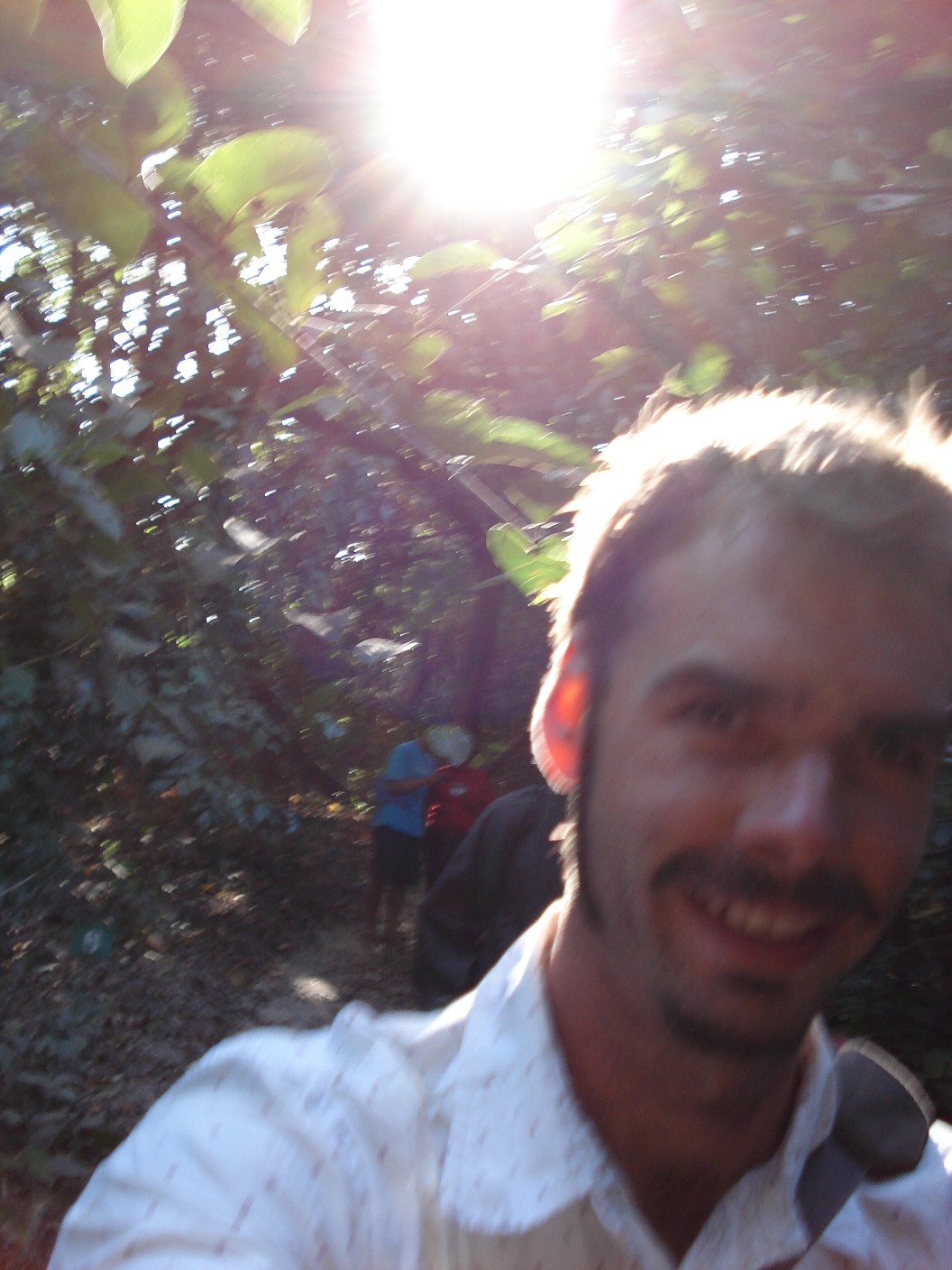
After my parents returned home I was excited to get back to work. I returned to my village where I jumped into a few projects around the compound. My Host Brother Landing had finished threshing the groundnuts and we bagged them for storage. Some will be saved for next year's seed and we will eat the rest in rice dishes such as nankatan, maffe gerte, and gosi. From a single hectare field of groundnuts planted in July, we harvested nine sacks in November.


I helped Gallo and his family make blocks to rebuild the walls of his house that had collapsed during the rainy season. Altogether, we made 4000 mud blocks. For ten days five men and eight boys hauled water from a pump, dug mud with short-handled shovels, and formed sun-baked bricks.


My garden is a work in progress. I've designed a permaculture "guild" in the back corner of my demonstration yard. The tall papaya provides shade for the squash and tomato seedlings while the shorter pigeon pea will fix nitrogen. The trees were planted during the rains in August.






Happy New Years. Mi weltima hitande hesere. I traveled to Fajara to wish upon the fireworks exploding over the beach.

New Year's Eve has always been my favorite holiday. I always make resolutions and this year was no exception. Mine: Instead of believing in nothing, I will make everything happen.

And so today begins my trip to Sierra Leone. I will travel for two weeks with my Peace Corps pal Jeff.

His old friend Ryan from back home is also traveling with us.

This blog post was the final thing I had to do before I could leave.


This almond tree is benefitting from the urine fertilizer I've been making. I apply about five liters of a diluted solution twice a month. The tree is very healthy and vibrant.


I harvested some of my sweet potatoes. They were planted in September on small hills in my back yard. I intercropped them with beans.

I'm really excited about the biochar projects I have going. Biochar is a soil amendment that is credited with contributing to the fertile soils of the Amazon. I collect the un-sellable dust and detritus from abandoned clandestine charcoal production sites in the bush. The government of The Gambia outlawed charcoal production twenty years ago as a measure to protect its dwindling timber resources. Because of the remote location of my village near the border with Cassamance, many people still engage in charcoal production.

My friend Bakary Jatta makes biochar using a gassification system. It is a clean and efficient way to make charcoal: Bakary uses crop residues and slash from his jatropha plantation. This process eliminates most of the carbon emitted into our breathe-o-sphere and retains more than 50% of the original biomass. The biochar is then mixed with the flotsam from Bakary's biodigester and finely chopped yard waste to create a productive planting medium.



This ebony tree is also doing well. I keep it mulched with the chaff from groundnuts and millet, broken stalks, and small sticks. The chickens scratch at the moist soil so I have woven the very prickly branches of a winterthorn atop the mulch. I've used biochar and compost in all of my planting holes.

I harvested some of my sweet potatoes. They were planted in September on small hills in my back yard. I intercropped them with beans.

I'm really excited about the biochar projects I have going. Biochar is a soil amendment that is credited with contributing to the fertile soils of the Amazon. I collect the un-sellable dust and detritus from abandoned clandestine charcoal production sites in the bush. The government of The Gambia outlawed charcoal production twenty years ago as a measure to protect its dwindling timber resources. Because of the remote location of my village near the border with Cassamance, many people still engage in charcoal production.

My friend Bakary Jatta makes biochar using a gassification system. It is a clean and efficient way to make charcoal: Bakary uses crop residues and slash from his jatropha plantation. This process eliminates most of the carbon emitted into our breathe-o-sphere and retains more than 50% of the original biomass. The biochar is then mixed with the flotsam from Bakary's biodigester and finely chopped yard waste to create a productive planting medium.

Bakary came here 1984 from Canada to work with St Joseph's Family Farm in Bwiam. He promotes jatropha as a cash crop. It is a small bush that grows well in this sub-tropical sahel environment. The nuts from jatropha are pressed and the oil can be used for candles, cooking flames, and soaps.

People from eight villages in Foni Jarrol attended the Feed The Minds sponsored Free-Bee rural training. We've been traveling around the country for the past four months trying to spark an interest in beekeeping. This two-day workshop was held at the NBAG/Concern Universal Brumang Processing Center near Kalagi.

We informed the participants about pollination, seasonal calenders, and potential income from small-scale beekeeping projects.

We also engaged them with practical instruction. We encouraged them to build their own grass hives which are inexpensive and efficient.

We are trying to get women involved in beekeeping. Currently, they have little role in the traditional practices of honey harvesting. We hope to inspire them to see some of the different ways that they can benefit from constructing hives, harvesting hive products, and selling value-added products at the weekly market.

I've also been working in the apiary at the National Beekeepers Association of The Gambia. This Kenyan Top Bar Hive was badly cross-combed and unmanaged. We are all terrified of it. Everytime Nick, Andy, Bah2, Kabee, or I go near it we just shake our heads and run away.

The combs had been constructed perpendicular to the topbars and the colony hadn't been managed since it showed up here three years ago. Finally we built up the courage to open it. We harvested honey and wax, corrected the orientation of the brood comb by wiring it to the topbars, and gave them honey from another hive to compensate for what we harvested.

Five days later and they haven't absconded.


Once the bees absconded, wax moths moved in and quickly destroyed much of the wax. It happens...

The combs had been constructed perpendicular to the topbars and the colony hadn't been managed since it showed up here three years ago. Finally we built up the courage to open it. We harvested honey and wax, corrected the orientation of the brood comb by wiring it to the topbars, and gave them honey from another hive to compensate for what we harvested.

Five days later and they haven't absconded.

Unfortunately, the bees from our observation hive did abscond. They had built several queen cells and eventually swarmed.

Once the bees absconded, wax moths moved in and quickly destroyed much of the wax. It happens...

Happy New Years. Mi weltima hitande hesere. I traveled to Fajara to wish upon the fireworks exploding over the beach.

New Year's Eve has always been my favorite holiday. I always make resolutions and this year was no exception. Mine: Instead of believing in nothing, I will make everything happen.

And so today begins my trip to Sierra Leone. I will travel for two weeks with my Peace Corps pal Jeff.

His old friend Ryan from back home is also traveling with us.

This blog post was the final thing I had to do before I could leave.

Now, it's time for me to hit the road.















